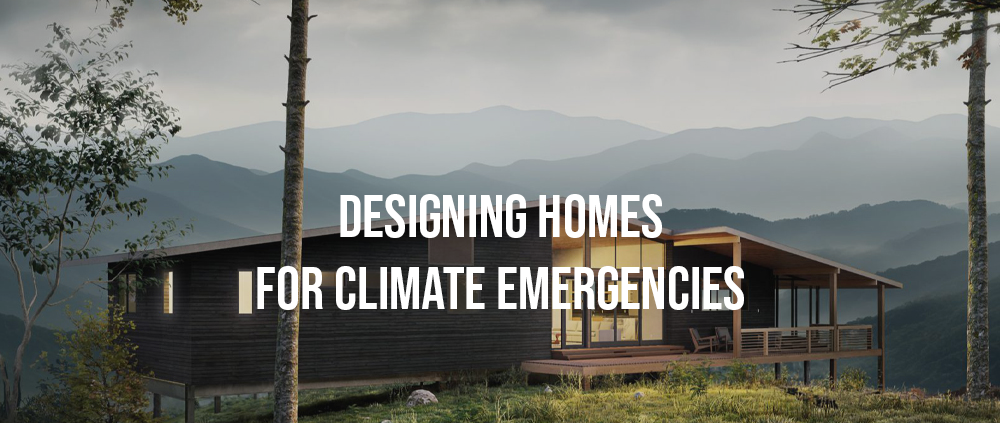Designing Homes for Climate Emergencies
We live in a time when environmental disasters are increasingly common. Around the world, humanity is facing an increase in wildfires, floods, earthquakes, and hurricanes.
Hurricane Helene
In the wake of the devastation of hurricane Helene, Asheville residents have become increasingly aware of the significant role energy systems play in our day-to-day lives. After experiencing prolonged energy outages, and months without running water, residents struggled to meet their basic survival needs as public infrastructure crumbled
Electricity, water, and road systems became inaccessible. Residents made long treks into town- often on foot- to find drinking water and food at a variety of community organized drop sites.
Asheville is beginning to recover, and this experience is something residents will not quickly forget.
An interesting piece of clarity arises from this disaster. It is critical to design homes for emergency preparedness. Architects in Asheville, and Asheville homebuilders are presented with a unique opportunity to proactively design homes to help support their residents in times of emergency.
How Net-Zero Homes and Emergency Preparedness are linked
During Helene, many homeowners equipped with net-zero energy systems and energy-independent infrastructure were able to maintain electricity and to use well water pumps. Because net zero homes utilize solar panels, they have their own source of electricity.
Some families with these features were even able to assist their communities during these times by providing electricity access, Wi-Fi access, well water, and hot showers.
This highlights the critical role that energy-independent homes can play in designing for emergency preparedness, especially as climate change increases the frequency and severity of natural disasters.
Net-zero home plans are designed to create homes that produce as much energy as they consume. The same design elements that make a home net zero, also help to create energy-independent homes.
The design elements which typically create energy-efficient construction include using solar panels as a power supply in conjunction with battery storage such as power banks to store electricity.
These features are used in combination with Passive solar design which reduces energy usage by designing homes to retain heat in winter and keep cool in summer.
These sustainable home design features, in combination with water-independent systems like wells, have the potential to be truly supportive in designing homes for climate emergencies.
During grid failures, net-zero homes can continue to operate independently, providing essential power for lighting, refrigeration, and communication devices.
This self-sufficiency allows them to function autonomously during emergencies, reducing reliance on external infrastructure that may be compromised.
However, it’s important to note that off-grid living typically requires more land, which can limit housing density. This poses a design challenge in dense city areas, which architects and city planners are just beginning to address.
Stay tuned for our article in the next weeks on Microgrid design- a new technology addressing this issue!
Written by Lily Aksan



